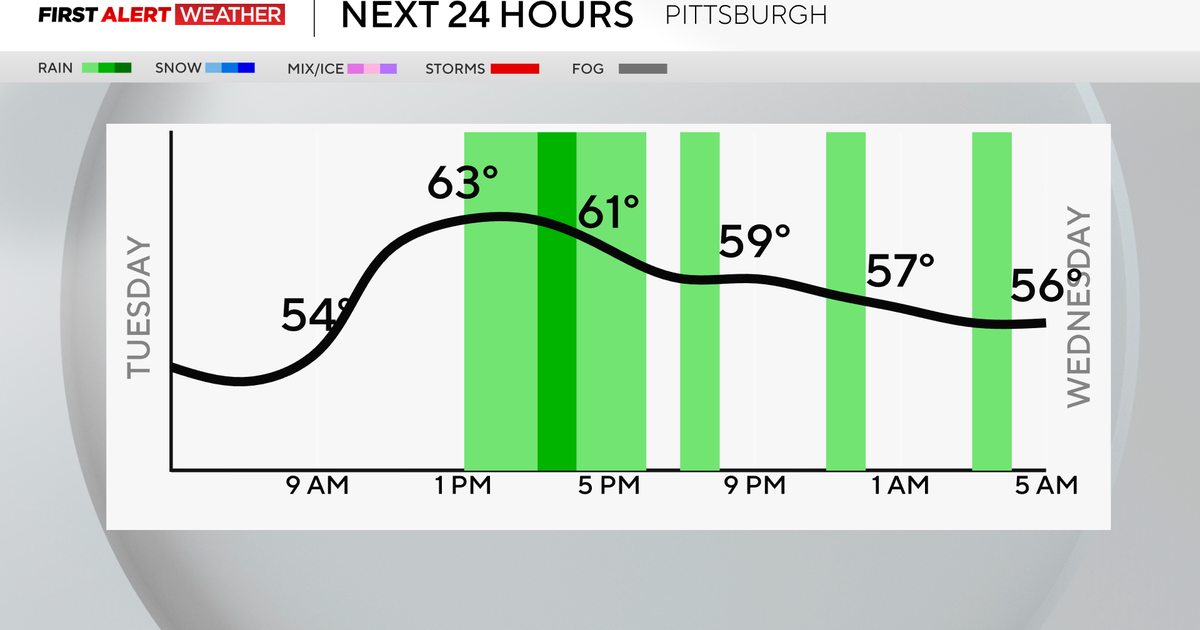Will Pittsburgh see more snow this year? KDKA meteorologists break down their winter weather forecast
PITTSBURGH (KDKA) — When it comes to snowy winters in Pittsburgh, everyone always thinks of the big three doozies of 1950, 1993 and 2010. It's been a while since we've had a real winter wallop. So are we due?
The KDKA First Alert Weather Team has crunched the numbers and consulted the maps to produce their much-anticipated annual winter forecast.
How did we do on last year's forecast?
We always start by looking back at last year's winter forecast because being open and honest about our forecasts is very important.
We told you we were going to have another winter with less snow than normal, but we were surprised with just how little snow Pittsburgh ended up getting.
An average Pittsburgh winter has 44.1 inches of snowfall. Our forecast last year called for 31 inches, but what we ended up with was the least amount of snow since the 1930s. Only 16.3 inches of snow fell for the season, making the 2023-24 winter season the sixth least snowy on record in Pittsburgh.
Our overall winter weather pattern in the U.S. is often influenced by the flow of trade winds blowing off the coast of South America. Last year's setup pointed to an El Niño pattern, but this year, La Niña looks very likely. That happens when those trade winds off South America get even stronger and bring relatively cooler water to the Pacific Ocean surface.
The outlook now shows a 74 percent chance that La Niña conditions will develop and stay in place through spring. This typically shifts the jet stream and brings our region a wetter and cooler winter.
But the wildcard is the very hot ocean water and air temperatures we had this summer and fall and whether that will offset any effects of a La Niña pattern.
What role do teleconnections play in our winters?
Now we want to dig a little deeper into teleconnections and the role they play in our winters.
A teleconnection is a link between regional and global weather driven by the position of the jet stream. Simply put, the weather in one part of the world influences the weather in another part.
The phase of a teleconnection determines how the large-scale weather pattern will behave. Some teleconnections, like ENSO or the El Niño-Southern Oscillation, evolve over months to years. Others evolve over weeks which can throw a wildcard in a seasonal forecast.
For Arctic outbreaks, forecasters look for a combination of teleconnections that cause the polar jet stream to dip and lock in place over the central and eastern U.S. Arctic air surges south into the states while warm air surges poleward.
For a winter thaw, forecasters look for a combination of teleconnections that cause the polar jet stream to be less wavy and retreat northward. This locks in the coldest air for places like Alaska, Canada and Greenland, while mild air moves into the rest of the country from the Pacific Ocean.
So, that's just some of the science behind how we put our annual forecast together. Now, let's get to the numbers.
What impact will winter have on your wallet?
When it comes to your wallet, the forecast is not looking good this winter.
Salt is now $10 to $20 per bag, the price of shovels has jumped 20 percent and snowblowers now range from $300 to $1,500.
And it doesn't stop there. Natural gas and electricity rates are all expected to increase. Peoples Natural Gas is going up by 12 percent, and Columbia Gas is going up by 8 percent. That increases the average bill for customers of both companies by about $10 a month.
As for electricity, First Energy's West Penn Power is raising rates by 6 percent, increasing the average monthly bill by $10. And Duquesne Light is going up by 4 percent, which amounts to $5 more for the average homeowner.
How cold will Pitsburgh's winter be?
Unlike last year where early indications were that it was going to be tough to see any significant snow due to mild temperatures, we will have cold stretches this year. We don't expect any of them to last long, but they will be long enough to give us at least some sort of winter.
When we break things down per month, we'll see most months being a consistent 1 to 2 degrees above average. However, January and February will likely be the months with averages closest to historical norms.
We're forecasting December to be 1.8 degrees above average for the month.
January will end 0.9 degrees above average, with February not far behind at 0.7 degrees above average. March will end 1.2 degrees above average while April will be 1.6 degrees above average.
How much snow will Pittsburgh get this winter?
If you're a snow lover, this is not looking like a good winter for you. The snow season looks to have a tough time getting started.
November is only looking at a modest 1-inch potential, while December may end up with only half its average with 3 inches forecast. January and February are usually our snowiest months and that will likely be the case again this winter.
That said, both are trending toward below average snowfall accumulations. We're going with 10 inches in January and 9 inches in February. Once March comes around, another 4 inches is possible. April could have a little winter weather lingering, so another 1 inch to end the snow season is not out of the question.
When all is said and done, our snow situation will look to be well below average again this winter, seeing a total of 28 inches compared to the average of 44.1 inches.
Bottom line: look for more snow than last winter but still well below the norm.




